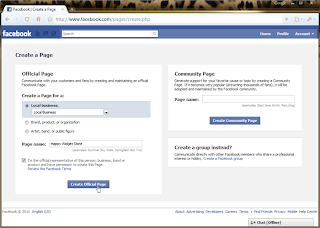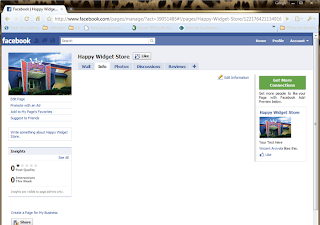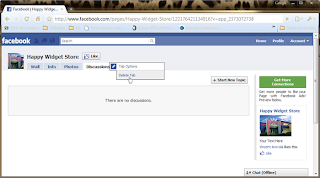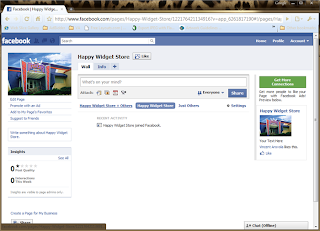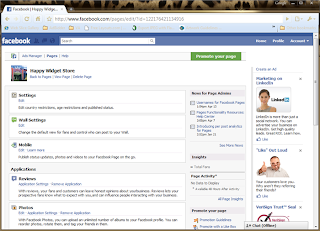1 - Get on Google
In the 2000s, Google took over the role of the Yellow Pages in the minds of many consumers and businesses. They remain a significant source of traffic and leads for more than one million local businesses today.
Use Google Places to create a free local listing for your business that appears on Google Map when people search in your city or area. http://bit.ly/bTOAsB
2 - Get on Yelp, Facebook and Twitter
Yes, there has been some controversy over the validity of Yelp listings in the past, but the fact is it does not seem to be going away. If you operate a local business, it behooves you to be on Yelp and to ask your satisfied customers to log on and leave a 5-star rating. Don't try to buy ratings by offering rewards, but do be sure to ask every satisfied customer to review you on Yelp.
Facebook and Twitter are also great ways to turn regular customers into loyal fans. It's free to create a presence for your business and cultivate a list of followers on each site. Studies have shown customers who follow you on Facebook and Twitter are more likely to return to your business more often and to refer more friends than non-followers.
3 - Don't Use a Personal Facebook Account. Use an Official Page Instead.
Facebook treats personal accounts and business pages differently.
People can't "like" friends, and your customers will be reluctant to connect with you if they have to request permission and wait for you to accept the friend request. You're much better off with an Official Page for your business that anyone can simply click "Like" to follow, as well as for a whole host of other reasons.
Also be sure to get a Short URL for Your Facebook Page. When you have at least 25 people Like (or follow) your Facebook page, you can choose a short url. Go here http://www.facebook.com/username and click on "Select Username for My Pages" to get yours.
4 - Start a Blog
Blogs are a proven way to build your business and reputation at the same time. If you operate a local business, there is a good chance you are an expert in the subject of what you sell. Don't blog about your business itself but about topics of interest to your customers. If you operate a sporting goods store, blog about sports. If you operate a video game store, blog about video games.
5 - Make a YouTube Video
YouTube is probably the most valuable and least used social media tool available to businesses today. You do not need to spend tens of thousands of dollars to produce tv-quality video for the Internet. Grab your handycam, interview the owners or some employees, interview some customers (i.e. testimonials), show some sexy products, and you have a YouTube video. If you're more creative than that (and/or if you're a ham), there's tons more you can do with YouTube.
6 - Ask Your Customers to Like, Follow, and Review You
This may seem like a no-brainer, but 95% of local businesses - even those with presences on Yelp and Facebook - overlook this simple but critical step.
As a local business, chances are you satisfy tons of customers every day. Something as simple as a business card with your Yelp or Facebook URL on it near the cash register will encourage satisfied customers to log on when they get home and join your following. Window decals and counter-top displays with take-away cards are also an excellent way to subtly encourage real-life customers to become social media superfans.
7 - Keep in Touch with Your Followers
Post updates, or short messages, to your Facebook and Twitter followers at least once every few weeks. Do not post more than twice per day unless your business is content production (e.g. a newspaper). For most local businesses, posting more than twice a day would annoy your followers, and posting less than once every few weeks will let them forget about you.
Facebook and Twitter give you a way to broadcast messages to your few thousand best customers in near real-time. "Near" real time because most people who use the sites check them often and will see any messages you post within a few hours. A sandwich franchise in downtown San Francisco doubled its lunchtime sales and its online following when it started tweeting out sandwich specials right before lunchtime. Most of its followers are business people work within a block of the store and check twitter daily before lunch. For them, it is a highly effective strategy to send out pictures of the daily special right at that time.

8 - Shut Up and Listen
Somehow this piece of advice shows up somewhere on every important Top 10 Tips list. This one is no different.
Do something interactive. Instead of just posting your own updates, post questions that invite feedback. Post quizzes. Invite customers to share their own photos, videos, or stories about your product or service - or even just the topic of your business. You will engage your customers and gain insight into their interests and needs at the same time.

9 - Don't Be Afraid of Negative Feedback or Reviews.
People expect to find one or two bad reviews on Yelp for most local businesses. If most of your reviews are positive with just a few spite-toned reviews mixed in, it usually reflects worse on the reviewer than on your business.
Consider the context of your whole page. A few isolated harsh reviews lack credibility and can wind up gaining sympathy for your business rather than turning off new prospects. If you have a pattern of negative reviews however, this should alert you to bigger problems your business needs to address to satisfy its customers. The reviews will improve when you solve the core business problems.

You should always do your best to find dis-satisfied customers and remedy the situation. In my experience, about 1/2 of a local business' superfans are really former pissed -off customers who you made ammends to. A bad experience turned right can help build a rapport that turns an average customer into an evangelist.
10 - Get Creative
At its core, social media marketing uses the same age-old marketing principles as any other medium. Understand who your customers are and what it is about your products or services that they really love to love. "What is the benefit?" How do you make people's lives better? Then use social media to remind people about that in creative ways.
Remember "Facts Tell, Stories Sell" in any medium. Don't focus on facts, features, or specifications. Tell a story about a customer who exemplifies the way your business solves people's problems. Even better, invite them to tell you (and their friends at the same time) a story about your business, product, or service.

Did you find this useful? Did it not answer your questions? Please post your comments below and share this post with friends.






